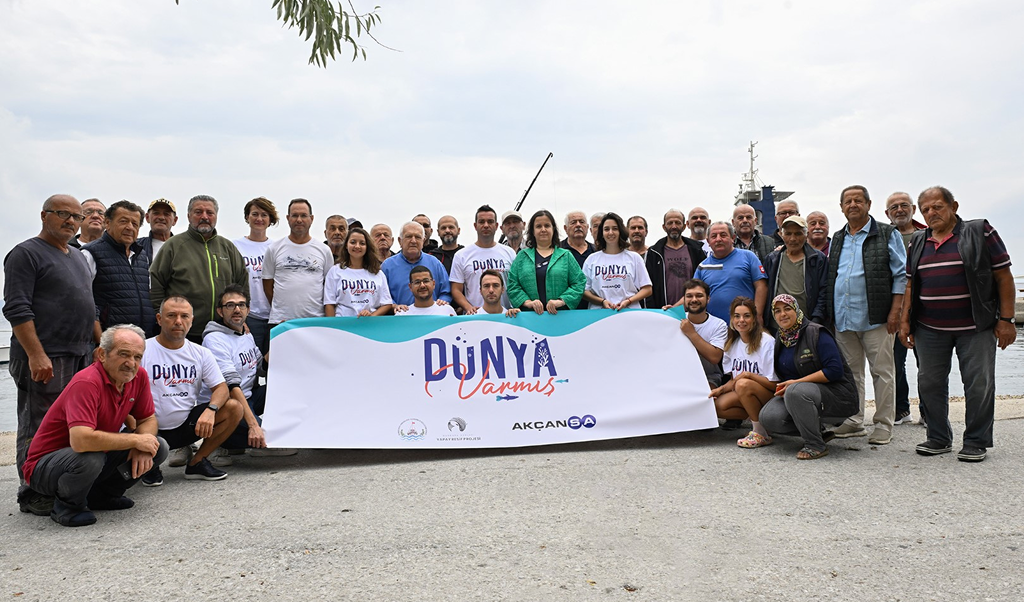
07 December 2023
Akçansa
Marine Life Will Thrive with Artificial Reefs
Artificial reefs will provide viable habitats for marine life in the Sea of Marmara.
Akçansa, a joint venture of Sabancı Holding and Heidelberg Materials, has successfully completed the Marmara Islands Artificial Reef Project in partnership with the Gündoğdu Village Beautification, Reconstruction, Development, and Solidarity Association, with advisory support from Balıkesir University and Çanakkale Onsekiz Mart University (ÇOMÜ), in the waters off Marmara Island.
A total of 280 artificial reefs were placed on the seabed as part of the project to contribute to shelter, nourishment, and biodiversity for marine life.
This project also stands out for its innovative use of materials. It marks the first major initiative in the Sea of Marmara to use 3D-printed reefs, with 160 reefs produced by 3D printers and placed underwater to serve as habitats for marine creatures.
The project was carried out with the approval of the General Directorate of Fisheries and Aquaculture under the Republic of Türkiye’s Ministry of Agriculture and Forestry. Along with preserving the region’s sensitive ecosystem, it aims to increase biodiversity and enhance fish populations.
By launching the Marmara Islands Artificial Reef Project, Akçansa has undertaken a significant initiative in partnership with the Gündoğdu Village Beautification, Reconstruction, Development and Solidarity Association to contribute to a more sustainable future.
Before placing the reefs, marine diversity and fish populations were monitored across four different seasons. Following this evaluation, the reefs were deployed. Of the 280 reefs, 160 were created with 3D printing technology, marking the first large-scale use of this methodology in the Sea of Marmara.
The reefs, prepared using the latest technologies, were placed according to the project’s program after nearly three years of research and preparation.
The Project Will Serve as a Scientific Reference
The project not only aims to enhance biodiversity and ensure sustainability but also seeks to provide a source of data-based scientific knowledge. The development and recovery of the ecosystem will be monitored for five years under the guidance of universities through measurement and evaluation studies.
All scientific data collected will be recorded to create a guide for implementing, monitoring, and developing artificial reefs. This guide is intended to serve as a reference for future projects.
Akçansa CEO Vecih Yılmaz stated: “With our vision of becoming Türkiye’s leading sustainable building materials company regarding stakeholder value, we continue to expand our efforts across a broad spectrum. We see biodiversity conservation as integral to our fight against climate change. We are pleased to provide marine life with habitats through the Marmara Islands Artificial Reef Project, which employs innovative technologies such as 3D-printed reefs. We will monitor the project’s progress regularly and take great pride in knowing that our support contributes to building a more habitable world.”
Nevzat Ekmekçi, Chair of the Gündoğdu Village Beautification, Reconstruction, Development and Solidarity Association, said: “The Sea of Marmara surrounding our island represents a vast habitat. We place great importance on artificial reef projects to enhance regional biodiversity and ensure sustainability. We are proud and delighted that, with Akçansa’s support, the Marmara Islands Artificial Reef Project will boost marine populations and revitalize habitats. Using 3D printing technology to produce the reefs and the scientific documentation of all project phases will also provide a model for future artificial reef projects.”
Assoc. Prof. Dr. Dilek Türker, Director of Balıkesir University’s Institute of Science, commented: “We conducted monitoring and documentation of fish biodiversity in the waters off Marmara Island prior to the installation of the reefs. We believe these artificial reefs will greatly enhance the island’s marine biodiversity and serve as a valuable scientific resource, being the first monitored reef area across both pre- and post-installation phases. The project’s innovative aspects further elevate its significance.”
Prof. Dr. Uğur Altınağaç from Çanakkale Onsekiz Mart University’s Faculty of Marine Sciences and Technology added: “The selected locations for the reefs were analyzed scientifically based on seabed structure, currents, thermocline layers, and water conditions. Numerous studies have demonstrated that artificial reefs play a vital role in supporting and enhancing marine ecosystems in Türkiye’s seas. We believe all stakeholders should support and expand artificial reef projects to promote sustainable fishing and boost biodiversity.”
